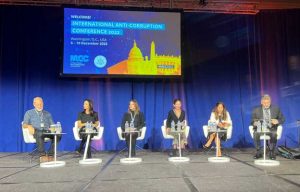The Coretec Group's development of its own unique chemical materials shows unicorn potential with their Endurion battery. Releasing an explainer video that shows that the battery has the potential to significantly increase longevity, speed of charge, and storage capacity of lithium batteries. This complementary technology could revolutionise the battery sector without the need for a complete overhaul of the industry.
The Coretec Group is aiming its resources at the Electric Vehicle (EV) market place and as a result is gaining the attention worldwide of major EV manufacturers. Heavy reliance on batteries for future sustainability is driving the global lithium silicon battery market, one that is estimated to grow from $10m USD in 2022 to $247m USD by 2030. This growth is why investment in complementary technology is a core objective of the Carlton James Diversified Alpha Fund strategy.
ROYAL WOOTTON BASSETT, United Kingdom, Dec. 16, 2022 (GLOBE NEWSWIRE) — The Carlton James Group, an investment management group specialising in recession–resistant portfolios and venture debt, is excited to see its first–backed technology company, The Coretec Group, achieving yet another of its milestones with the successful progress of its Endurion lithium silicon battery program. To learn more about The Coretec Group, please watch this short informative video.
The Coretec (CRTG) journey with the Carlton James Group started in 2016, as The Coretec Group became the first major technology sector lending investment for Carlton James. From the very beginning, Carlton James Group saw the clear potential of the engineering expertise within The Coretec Group, and its potential for adding value to the EV and energy supply chain.
Since then, The Coretec Group has gone from strength to strength, with acquisitions, a reverse–merger, and a growing team of engineers, expanding the expertise of their unique chemical developments. This has enabled more research & development to be undertaken by The Coretec Group in this extremely high value sector.
The launch of its Endurion battery program in early 2022 saw a natural progression that has led to contact from some of the world's leading electric vehicle manufacturers, opening doors for The Coretec Group to become leaders in the field of EV lithium silicon battery technology. In the first quarter of 2023 it is expected that we should see this hard work on the battery lead to further validation in the industry and a strengthened patent portfolio, paving the way for the group to move forward with its partnerships in the EV marketplace.
"The Coretec Group shares our vision of the most effective way to bring new technologies into the market. By developing technology that can enhance existing products in the market you have accessible scalability across many sectors," said Bob Pain, Chairman of The Carlton James Group.
"It is important to us that any technology investment we make is easily adopted and complementary to the existing marketplace, therefore increasing the opportunity for a higher return on investment due to having more potential customers. This is what The Coretec Group is doing. You can see this from their overview video, which is a great way of learning what they do and understanding its market opportunity.''
To see the Explainer video please click the link – CRTG Endurion Battery Explainer Video
For more information The Coretec Group visit www.thecoretecgroup.com. The Coretec Group is a publicly traded company, for more information on this visit investors.thecoretecgroup.com
About the Carlton James Group
The Carlton James Group is an investment management group with a strong track record, specialising in diversified venture debt across varying global asset classes. The company's Diversified Alpha Fund (DAF) is designed to manage risk and provide strong returns to investors. The fund is not market correlated and is structured to utilise the Group's existing strategies and experience, which has historically overcome macro–economic issues through all stages of the economic cycle.
www.carltonjamesgroup.com enquiries@carltonjamesgroup.com
Please follow the Carlton James group on LinkedIn and Facebook
Contact information:
Carlton James Group
Phone: +44 1793 230 277
E–mail: info@carltonjamesgroup.com

GLOBENEWSWIRE (Distribution ID 8716215)




